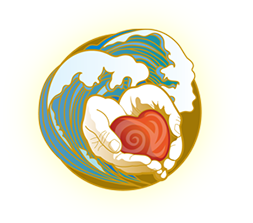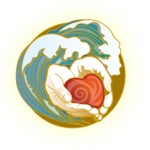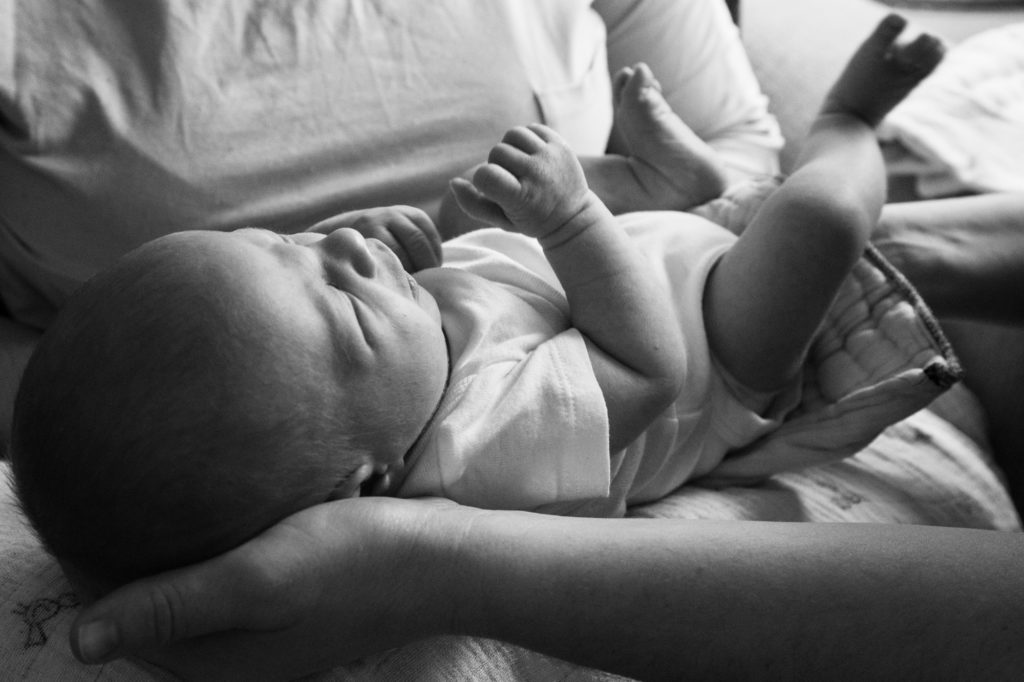
Wherever a group of likeminded people come together with a common ideal or goal to better the experience of the people around them, we see Community. From small groups cleaning up a local park to the reach of a city council, there is Community. In a broader view, an online summit or virtual class, where like-minded people can come together to exchange ideas and hone their skills, we can see community forming and building.
What does it mean to work in Community with Babies? If you are reading this you are likely a member of the Craniosacral Community: a group of practitioners of this modality/art. If you are working with babies as a Craniosacral Therapist, you are likely, and hopefully, nested within a group of local or regional practitioners working with this same population including midwives and birth professionals, lactation consultants, occupational therapists and others.
If these are the broad strokes of the community we are working within, what does it mean to work with babies in the cranial field?
Yes, that sentence gets its own paragraph. Consider it, deepen your consideration. For professionals like Craniosacral Therapists, we get to work everywhere from the very fringes of holistic care and private pay only, to coupling our modality with professions we are already established in, like occupational therapy, that can work within hospitals and bill insurance. To work in this field with babies, we expand our visibility and reach in these settings.
Inherent in this population is an intersection with parents who have never heard of our modality and never would have thought of bodywork for their baby; this was not part of their birth plan. To work in this field also brings intersections with other professionals that never thought they would be working with us… and vice versa! Pediatric dentists and lactation consultants are the most frequent source of referrals to CSTs working with babies, bringing interface with pediatricians and chiropractors and treatment plans. Often, these partnering professionals don’t work with emotional release, it may be new language to them. ‘Holding the Health’ sounds wonderful, but what does it mean? Where is the application here and how will it help this baby to feed, move or unwind? Working in Community with Babies is part of the amazing adventure of bringing Craniosacral Therapy more and more visibility in the mainstream health care world.
The collective of practitioners in my area who refer for CST continues to grow as the impact of our modality becomes more obvious in the clients we share. Graduating from my BCST program in 2014, I never thought I would be working alongside and sharing notes with a pediatric dentist or having close, mutual learning relationships with lactation consultants. The way these relationships have grown our personal and collective knowledge has been awe inspiring. When we open to the opportunity of working together across different modes of expertise, we create a new level of knowledge that wasn’t there before.
Can you imagine being a lactation consultant doing all you know for position and dietary changes only to discover that some of the issues the family is navigating stem from tension or mistrust laid down by previous experiences? It can look and feel like magic when a bodyworker addresses these issues and the rest is smooth sailing. The question that arises is what else can change in our health care system with a more holistic point of view, when all of an individual’s care providers are putting their heads together to fill in the gaps in each other’s experience and knowledge?
The group of professionals we’ve grown in my city is half way through its second year of using the referral and peer support system that we cobbled together in January of 2021. We number 10-12 members and are by no means exclusive in referring to each other. We initially began as a peer review group that by proxy, created space for deep friendships along with professional respect.
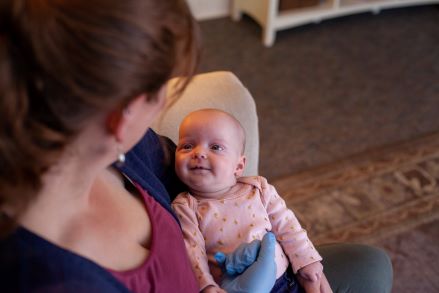
We wanted a surround for ourselves, as professionals, for all the times our clients stump our current expertise or their stories break our hearts. During this last year and a half, our knowledge and trust have made some impressive advancements together, but what we all stand and marvel at, is how this has become the creation of a community–wide–surround.
If you are not familiar with that language, the term ‘surround’ found its inception and momentum in Ray Castellino’s work, specifically his Womb Surround workshops. His language around the space that we are born into and the family systems we grow within, are described as surrounds. Within our professional field, this is very descriptive of the quality of the treatment field we find ourselves within, this is amplified in working with mom/baby dyads and families. A birthing parent does not need to be partnered or have any immediate or extended family around them to have a surround. A surround is what we are always nested within, throughout our lives; it is the relational growing medium that holds us. Hopefully, it holds us in safety, with support, even as we know this is not always the case.
In creating a community of professionals who hold families in these poignant stages of their birth and postpartum seasons, we unexpectedly created a Community Surround. It feels like a support network, an incredibly wide, safe space for families to land in. Each of the professionals in our collective have experienced the relief, the teary-eyed settling, of parents who thank us for holding what we do and taking off their shoulders the endless recitation of what they are struggling with or what another provider has suggested for their care. We create spaces where isolated new parents, groggy with interrupted sleep, can bump into each other and recognize they’re part of the same support web, instant relationships are made. They begin to create their own webs, their own communities.
We are holding anchor points in the rebuilding of the idyllic community we all hope to share with our children. Disclaimers here, this was not what we set out to do and it is by no means perfect. Our town is a military outpost where many families arrive by orders and stay for a few years before being relocated again, but while they are here and for those who stay, seeds have been sown and something has begun to grow.
It has now become one of our group’s primary intentions: to hold the community surround and keep this intention present in all our client interactions. The organic unfolding of this aspect of our relationships has added layers of understanding to each of our individual professions. In our Craniosacral community, we often engage in mentorships or have a structure within trainings where teachers and teacher’s assistants support each other. It is explicit in these structures that providing this level of support effects our students and clients in profound ways. The way Craniosacral Therapists hold a surround every day is part of our work and our language. Within a community, watching the way this naturally ripples into a wider paradigm of professionals, clients and modalities is mesmerizing, it inspires more of this connection in the best ways.
Diving even deeper, the keystone of our work is presence. Our work of creating space and holding an anchor for our clients allows them to renegotiate their experiences. By holding the health in neutral non judgement, clients have an opportunity to reorient to their own innate vitality through the steadfast, loving eyes of another. When this experience is birth and the entrance to parenthood, we have created a space to reorient to health for a mother, her baby, her family, her family of origin… and if we continue through the ripples of possibility… her care providers and ancestors. At this cross section, we are introduced to a baby with ‘tension’ and an opportunity to address it, as well as calling on our unique ability to hold the entirety of a family experience with our knowledge of intergenerational trauma and the healing promise of the nervous system. If our goal is to touch into what it means to work in community, working with babies is a rich place to dive in.
For the better part of a decade, I was in service as a birth doula. During my training I was struck by Penny Simkin’s story of what set her on the doula path. Penny, the well-known author of The Birth Partner, A Complete Guide to Childbirth for Dads, Partners, & Doulas, she describes being in a hospital Labor & Delivery looking for a quiet place to complete some paperwork. A nurse directed her to a room where she could take up a corner for the task, but the room wasn’t empty. She was in the corner of a room where a woman was laboring on her own, a woman who later sang Penny’s praises and claimed that her gentle, quiet presence in the corner, just knowing she wasn’t alone, made all the difference for her birth experience.
It was stories like hers that set my own feet onto the Doula path. I thought, if my presence can do that, let me learn all I can to powerfully hold that space for other women becoming mothers! Holding this very specific layer of support showed me how birth creates families so diverse we can have no judgement of their perfection. The word “surround” was not in my vocabulary yet I was craving its acknowledgement and knew that to hold it with intention could make all the difference. In the labor room I experienced, acutely, the need for multi-layer support I could never offer as an individual. I witnessed what my words and presence can and can’t do against the words of another family member, care provider or unsupportive society in the wider surround. In short, I felt the limits of what one person can hold in a field and what it feels like when that is uplifted by others in the space, or punctured.
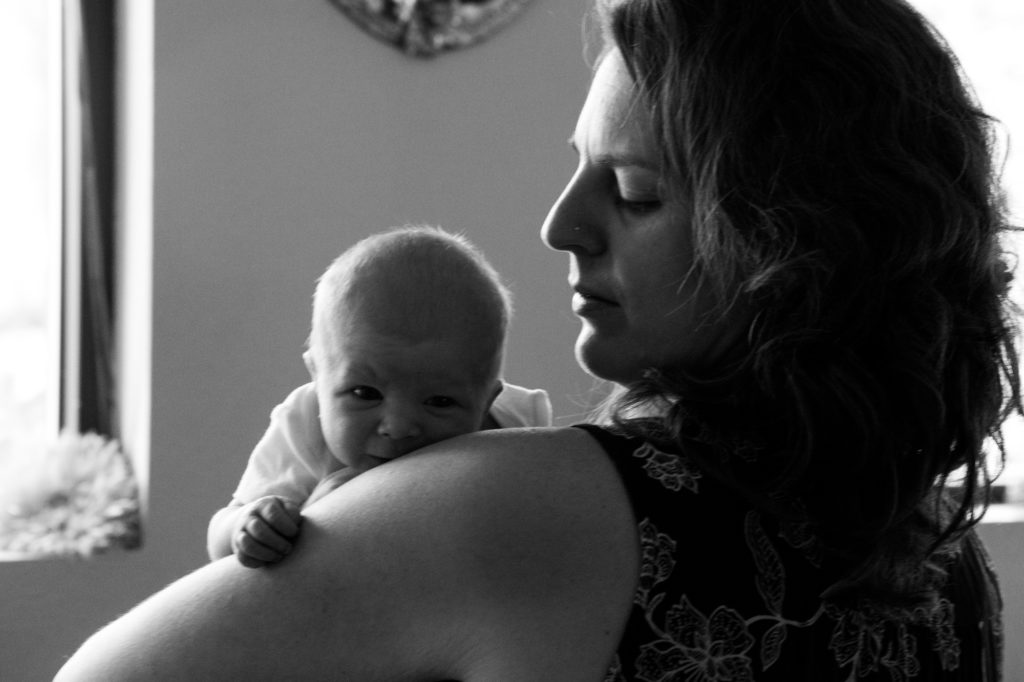
When I discovered Craniosacral Therapy, the vocabulary materialized for me to articulate what was missing in the birth room. The sacredness of relationship between a Craniosacral practitioner and their client is inviolable, the cornerstone from which every session takes form. Here was a place where we hold the whole, knowing that the health is never lost regardless of surface expression. Walking through birth with numerous families over the years presented plenty of opportunities to hold the blueprint of natural, physiological birth and bonding; and just as many opportunities to see the imprints laid down in early experiences or passed down through generations. In the birth room, I really began to notice the gap between my own intrinsic knowing of the trust, care and responsibility I carried for the families I served and how that relationship would often play out within wider dynamics with family, other care providers, even within the mother/baby dyad.
Within the Craniosacral Therapy Community, I began to really discover the uniquely honed skill set of presence, patience and reverence that has been sidelined in traditional care for far too long.
Families and care providers are feeling this too, many are vocally craving a shift in care, in relationships with their care providers and within their families. Some important pieces of this shift are provided by Craniosacral Therapy’s inherently deep listening. These qualities are drawing families to our modality in growing numbers each passing year.
It was the intention of our local professional collective to serve these families with a more comprehensive level of information, care and skill. Watching how that has blossomed into the intention of holding a community surround has drastically changed the approach of each professional involved. Along with health histories, we are listening for family dynamics and places where clients feel solid and supported. With each baby that comes to one of us we are holding the entire experience of the family so far, from the parent’s own conception to the present of the newborn presenting for care. Each time we hold them in their entirety, we are also steadfast in knowing that WE are holding them, not ourselves as individuals, but as a collective of practitioners, and for most of us, as fellow parents, with the shared understanding of what it feels like to be seen, to “get gotten”.
Working with babies and families we walk the line with our treatment goals. The family most often has an outcome in mind. They were referred to CST for tension baby’s body that is interfering with feeding or for a helping hand in recovering from a difficult birth. In the span of an hour, we are invited to be witness to intergenerational family dynamics, holder of birth stories and skilled practitioner who will ‘make things better’ somehow. How do we hold the whole for all of these layers? Where do we put our attention? How do we honor the impact we are having on a new person, a family, a community? We see now that our job is to be present and hold the whole regardless of our training or modality. However long we are privileged to walk with our clients is our gift the client is the only one guaranteed witness the unfolding that follows.
Supporting babies in the Cranial field is a deep acknowledgement of our own origins; every single one of us has been born. Each of us navigates our family system and is shaped by it (or lack of it). Regardless of our status as parent, grandparent or not parent, we can all be involved in holding this surround for the people growing within our communities. On deeper levels we can hold the wisdom in doing this for families with newborns and the potential for repair, rediscovery and reweaving of what is in our genes. There are places that come alive in us when we touch places our ancestors walked. Holding this community surround and the awareness of its impact is one such place.
Several years ago, I found my practice booming with babies. Coming from a background working with birthing families it was a pleasure to put on this new hat and wear it to very best of my ability. It didn’t take long to find that there was so much more for me to learn and that the limitations of one person holding the field that bogged me down in the birth room were still present in private Craniosacral practice. Recognizing this was the place of inspiration for reaching out to other practitioners who know what I don’t know. The organic unfolding of our peer review group is the culmination of generations of knowledge, professional and personal, answering the call of a community that is calling out for deeper connection, wider support and the just right wisdom to create a surround powerful enough for this new generation.
My original vision and wildest dreams for our peer review group now seem so small compared with the reach, impact and breadth of what has arisen from the connection between this little group of practitioners in my mid-size city in of the American West. After the first year of our monthly meetings, when it became apparent that the quality of our connection was having a deep impact on our clients, their journeys and by extension our community, we agreed it was time to be more official.
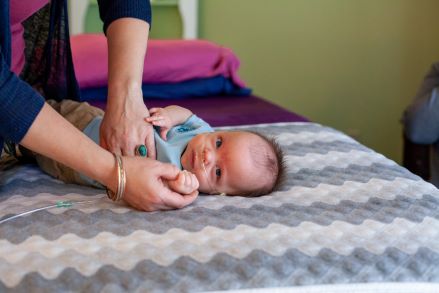
Heartbreakingly, early in our first year, one of our members succumbed to cancer. Early on in our meetings as we discussed why we all do what we do, she shared the Starfish story. You have likely heard this one before: a small child was standing on a beach strewn with thousands of stranded Starfish, picking them up, one by one, and throwing them back into the ocean. An older man came walking by and asked what they were doing, and why. “You can never save them all,” he reminded the child. To which the child replies, “I know,” pausing to toss another into the water, “but it made a difference for that one.”
In this simple story, is the answer to why we settled on calling ourselves the Starfish Collective. We meet once a month, 10 times a year, to share what it is like to hold this space for new families in our city. We support each other in times of doubt, fill in gaps or blind spots in each others knowledge or experience (we all have them), or share recent studies and new books we should all be aware of. Perhaps most importantly, we discuss our clients with reverence while holding the very best possibilities for their future experience in our hearts. We stay open to the possibilities of what we don’t know and where we can’t help to create space for those who do know and who can help so that we can be a part of our community’s growing strength. Not every new baby and family will pass through our hands or need our help. For those who may need help, support, repair or a wider surround, we will hold whatever potential we can for them, in reverence and solidarity. And for those ones, it could make all the difference.
- In 2024 Emily Martin will be teaching her advanced biodynamic 3-module program entitled Supporting Babies in the Cranial Field. This course is for certified craniosacral therapists.
NOT PUBLISHED ON MEDIUM
Also published on Medium.
